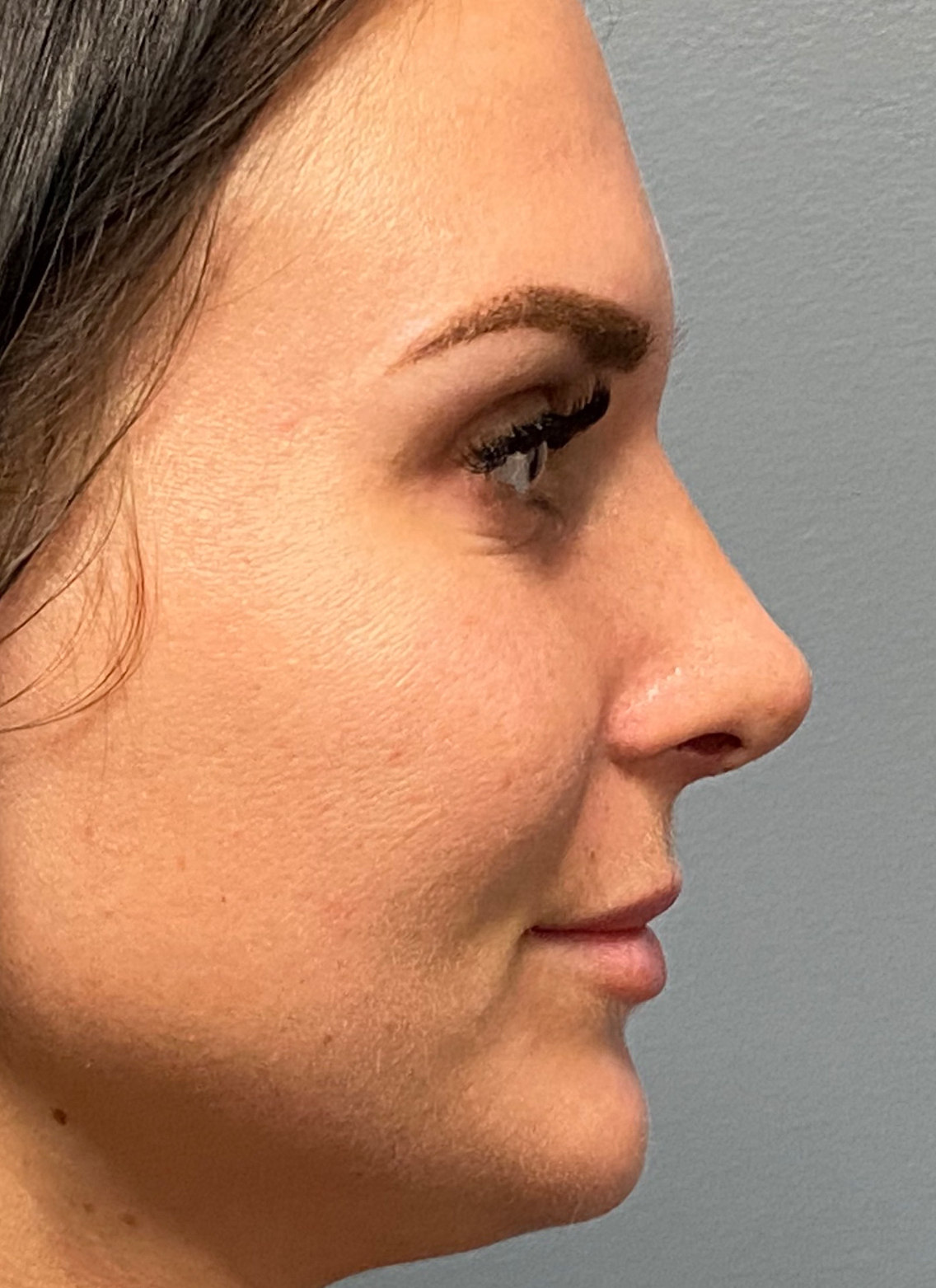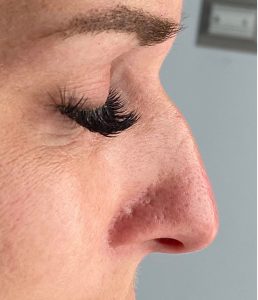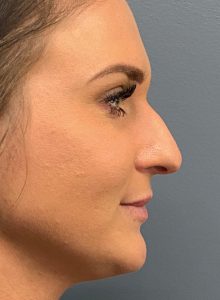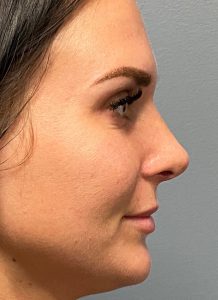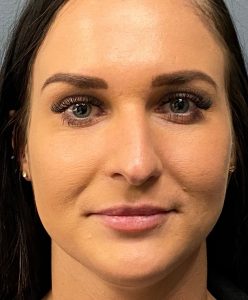Background: Rhinoplasty is a very well known facial plastic surgery procedure. It is what I call the original facial reshaping procedure in which it changes a structural or foundational area of facial anatomy whose impact can be a major change in a person’s appearance. Because it is a structural procedure in which the bony and cartilaginous anatomy of the nose can be cut, bent and reshaped there is going to be some significant swelling, and often bruising as well, as a result.
The major recovery from rhinoplasty surgery typically involves swelling and bruising and often some nasal congestion as well. While most patients know that it can take months and even up to a year to see the final nose reshaping result in full detail, what most patients are initially interested in is how soon will they look ‘non-surgical’. In other words the early recovery phase is about how long until one feels comfortable going out in public and not be obvious that they have had surgery.
The common intraoperative methods to help control postoperative swelling is the use of a compressive dressing applied at the end of surgery. (tapes and/or splint) This compression pushes the skin back down onto the bone and cartilage framework. By eliminating some of the dead space between the elevated skin and the altered structural framework less fluid can accumulate between them…which results in less swelling and nasal skin distortions after surgery. This historic rhinoplasty technique remains a mainstay today as it is hard to envision applying no compressive dressing at the completion of the surgery would produce the same immediate result after surgery.
Case Study: This young female had a long time desire to change the shape of her nose. She was bothered by a large hump and a tip the was both long and plunging. (nasolabial angle 90 degrees or less)
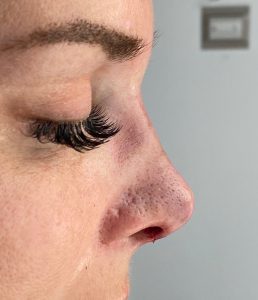
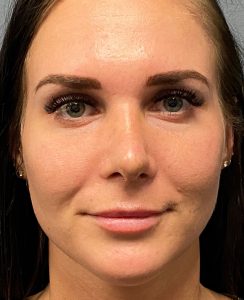
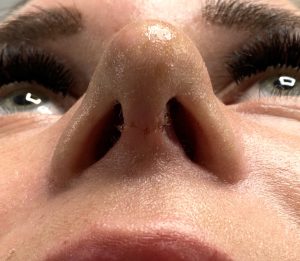
In addition to a short term postoperative nasal compressive dressings, the intraoperative use of a high concentration epinephrine-containing solution (1:50,000) is an invaluable aid to reducing bleeding during the surgery. Less bleeding during and after the surgery will certainly create some limits as to how much swelling and bruising occurs after surgery. While the most common epinephrine concentration that is available in a premixed bottle is 1:100,000 (2% Xylocaine with 1:100,00 local solution) that is inadequate for really good hemostatic control in the nose. A hand made higher epinephrine solution (1:50,000) is superior in the highly vascularized nose. In addition the use of TXA (tranexamic acid), which has recently become popular in plastic surgery for bleeding/bruising control, is also helpful as a clot stabilizer. It works by bring an inhibitor to the lysine receptor found on plasminogen. As a results it prevents plasminogen from binding to the fibrin metric (clot) and this stabilizes it. While epinephrine helps limit intraoperative bleeding, TXA keeps the blood clotted. Together they are a useful pharmacologic strategy during rhinoplasty surgery. These agents combined with a gentle surgical technique will help the patient ge through the early recovery phase more quickly.
Case Highlights:
1) The recovery from rhinoplasty surgery involves a prolonged swelling phase and often undereye bruising as well if the nasal bones have been manipulated.
2) The use of a compressive nasal splint and taping for a well after surgery is the most common postoperative strategy to control some of the nasal swelling after rhinoplasty surgery.
3) The infiltration of the nose during surgery with high concentrations of epinephrine and TXA, along with gentle surgery technique, can lessen the amount of swelling and bruising that occurs after rhinoplasty surgery.
Dr. Barry Eppley
World Renowned Plastic Surgeon

